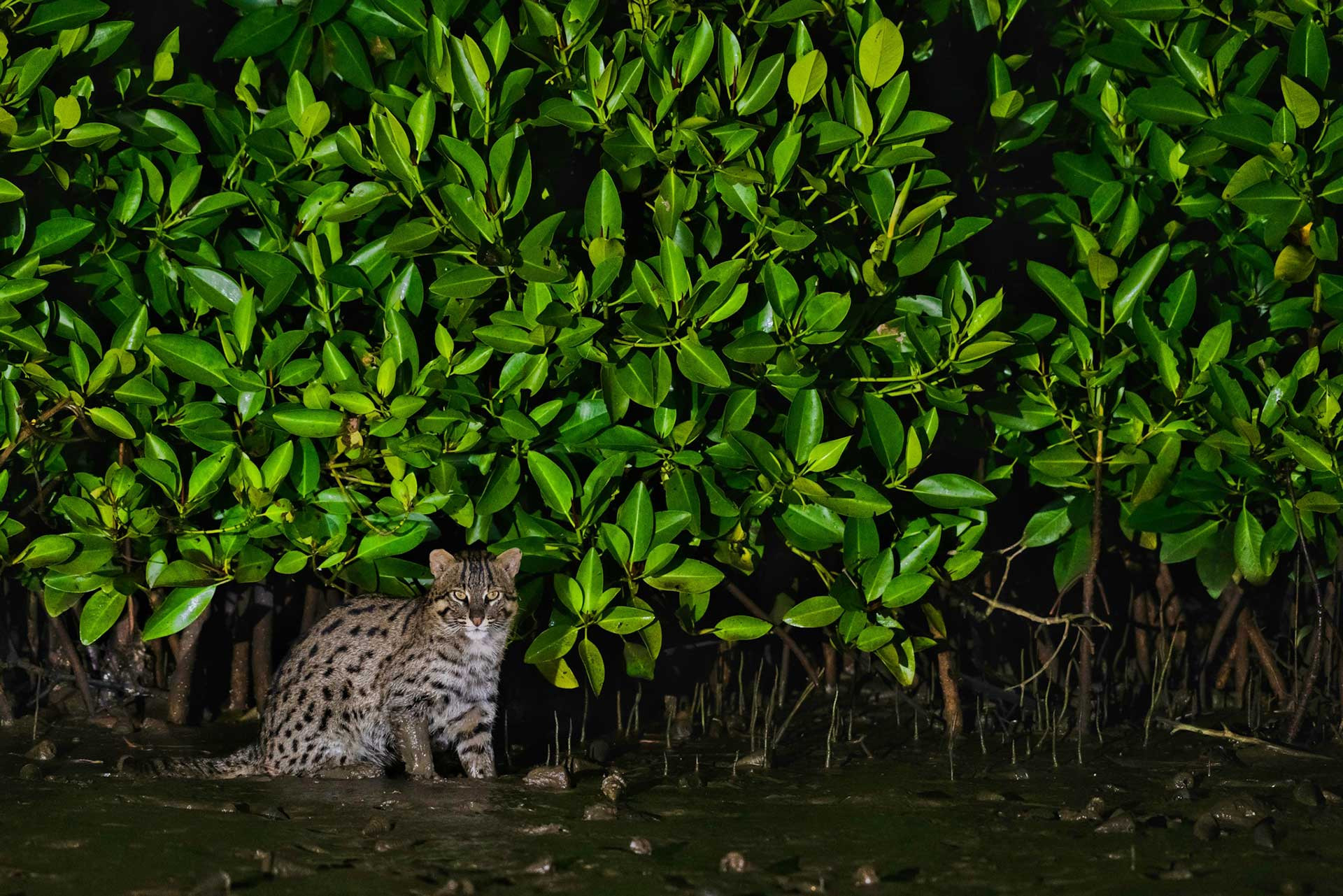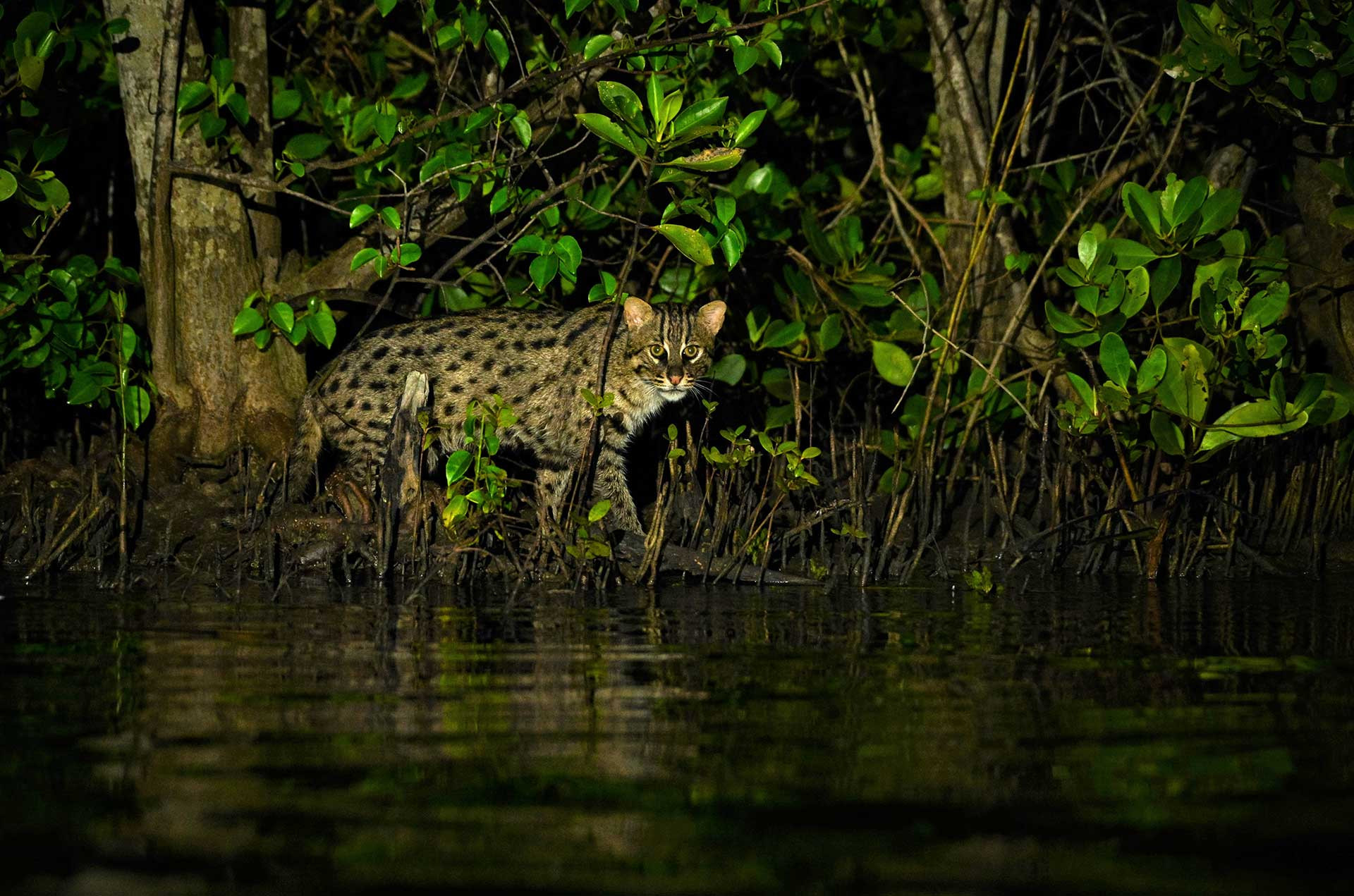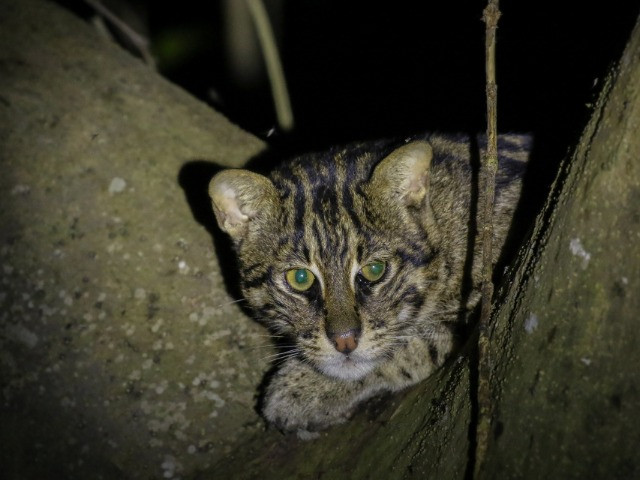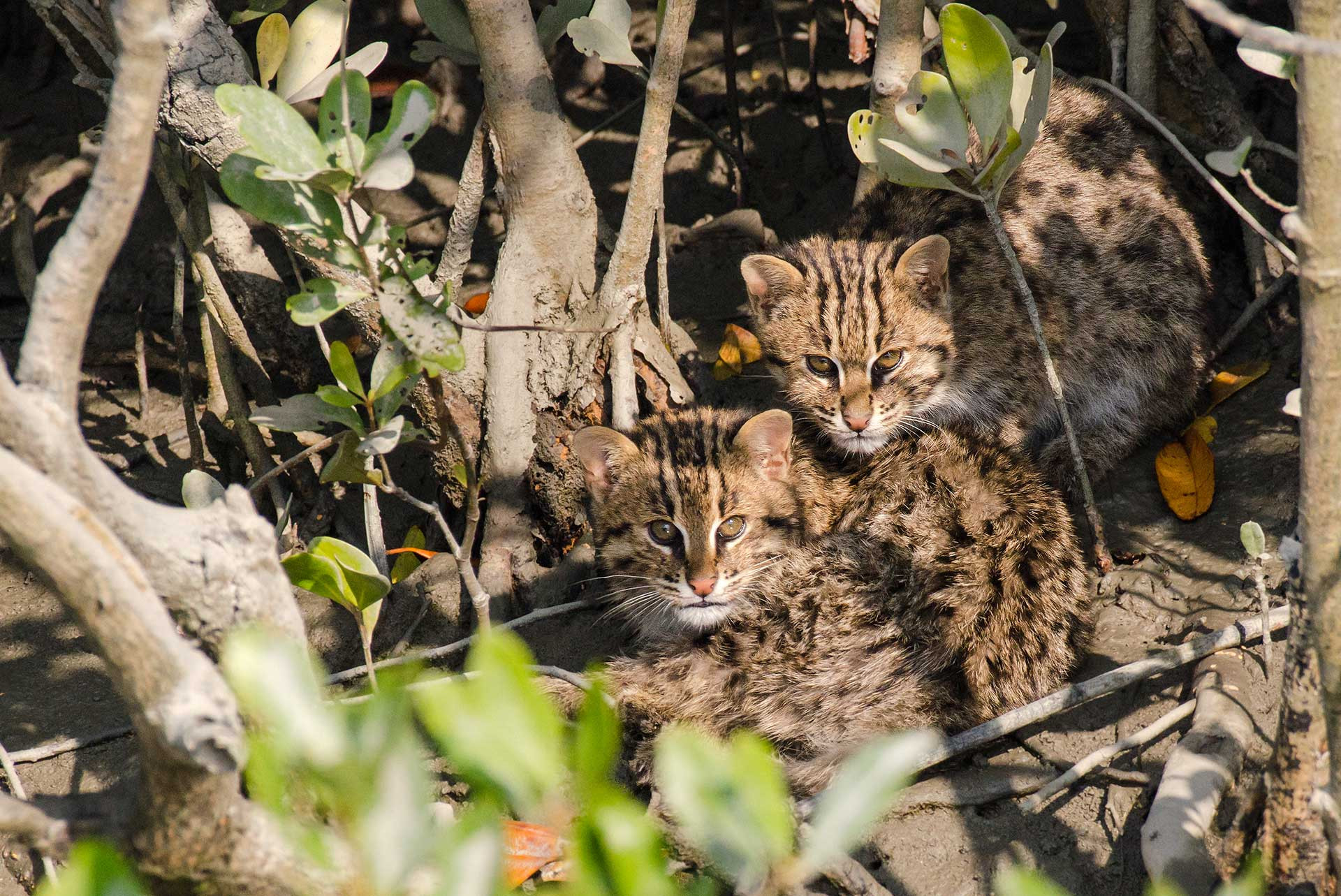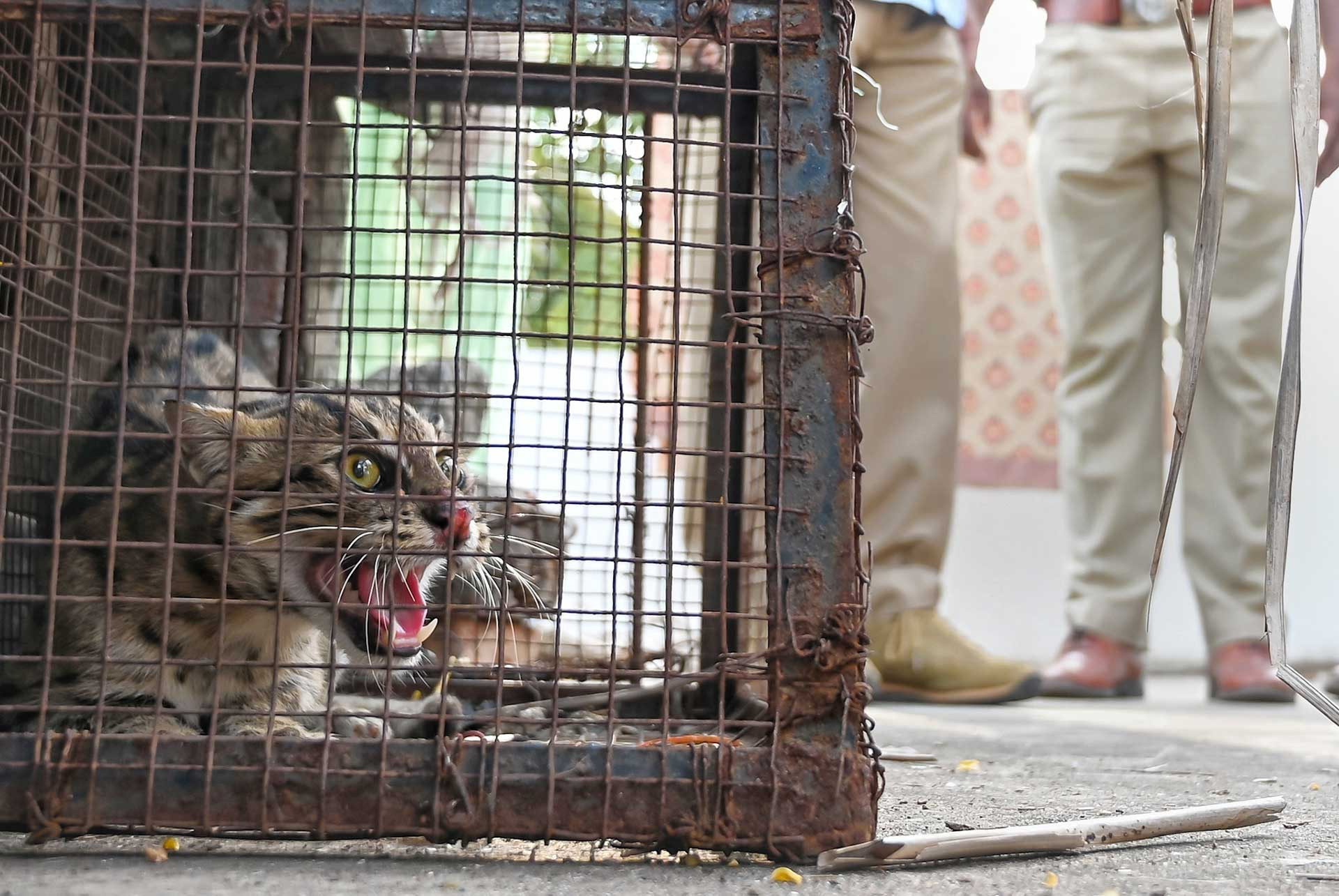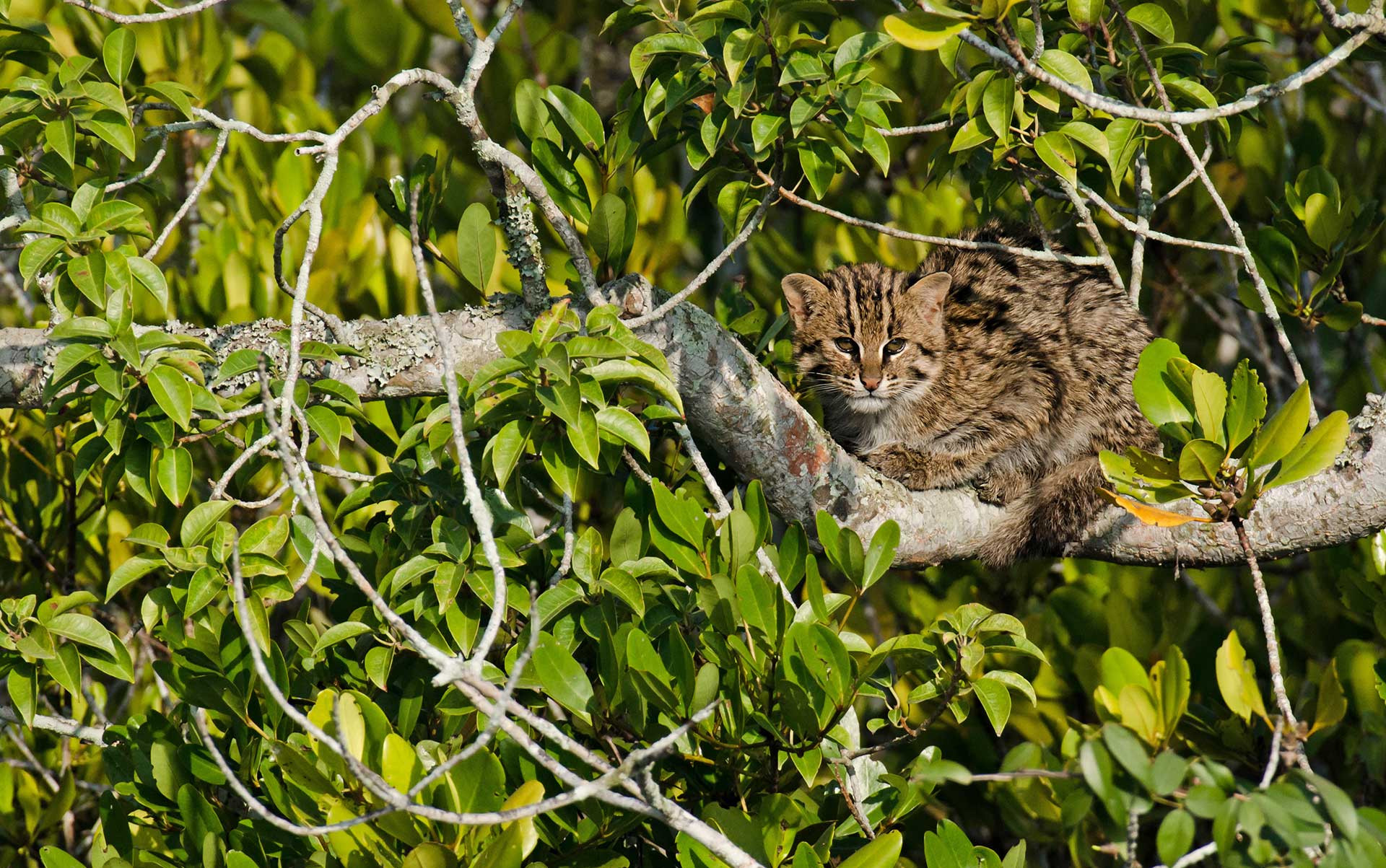The largest religious monument in the world is the Angkor Wat in Cambodia. Built in the early 12th century, the massive complex is spread over 162 hectares and also finds itself on the country’s flag. If you ever visit this UNESCO World Heritage site, be sure to pay close attention to the carvings on the monument. Somewhere in the vast temple, you will find yourself looking at the outline of a Fishing Cat.
For a felid that is etched on the country's most popular monument, the Fishing Cat no longer share the same glory. Until recently, the only previously confirmed record of the Fishing Cat was from 2003. But as per a 2017 Cambodia-based camera trap survey, eight instances of the felid's existence were recorded in the region over five months.
Closer to home, the story is no different. Fishing Cat is the state animal of West Bengal and is locally known as baghrol or machbagha (fish tiger) in Bengali. Apart from the loss of habitats, the Fishing Cats of India also face a grim future due to retaliatory killings, accidental deaths as a result of roadkills, and hunting traps placed for other animals.
In this story, we list some basic facts about the Fishing Cat and give you a preview of the ongoing efforts to prevent its extinction. We hope this will not only help raise awareness about the piscivorous felids, but also about the state of their ecosystems.
Water-loving, Good-looking!
Largest among the small wild cats, Fishing Cats are characterised by short limbs and a stocky torso. While male cats weigh between 8-14kg, female Fishing Cats are slightly smaller and weigh between 5-9kg. Fishing Cats are identified by their greyish brown fur marked with black lines. The colour of their nose varies from brick red to a mild pink, and their tails have about six partial ring-like markings. Their morphological features are also well-adapted to a life near the water. Their front toes are partially webbed, making them adept swimmers.
From Marshland to the Metropolitan
Present in parts of south and southeast Asia, Fishing Cats are found in countries like India, Pakistan, Sri Lanka, Thailand and Bangladesh. While they are observed near water bodies and low-lying marshlands in India, in Sri Lanka, they are also seen in elevated regions. Marshlands, swamps and mangroves are critical habitat ecosystems for the Fishing Cat. They have been observed in agricultural land that have standing water bodies and, more recently, even in urban spaces.
You may also like to read
The Piscivore
Generalists in nature, Fishing Cats feed on fish and small mammals and birds to a small extent. While fish form a large part of their diet, a study mentioned in the IUCN Red List states that the Fishing Cat consumes between 365 and 730 rodents annually! They capture their prey from the shallow regions of water bodies. The breeding season for Fishing Cats is usually between January and February, and females give birth to about one to four kittens after a gestation period of 65 days. Fishing Cats are sexually mature at about 18 months.
At Odds with the Fisherfolk
Fishing Cats are designated as Vulnerable by the IUCN Red List, and their populations are decreasing across their range. The Schedule I animal is among the most vulnerable small and medium wild cat species in southeast Asia. Habitat loss and degradation are significant threats to the Fishing Cat. Their dependence on fish for sustenance also leads to conflict with the fisherfolk. This is part of a larger issue, explain wildlife biologists Divyashree Rana and Imran Samad in their story Two Tales Of A Cat. “Though the fishermen hold a nonchalant attitude towards the Fishing Cat, the species often falls prey to electric fences set up to target otters and poaching traps set for Jungle Cats,” they write.
While reports from Cambodia reveal retaliatory killings for destroying fishing nets, such incidents are believed to occur across the mammal's range. In January 2022, bodies of three female Fishing Cats that were poisoned and dumped near the paddy fields in Bagnan, West Bengal, shocked conservationists. Several such incidents have also been reported in the past, highlighting a severe lack of awareness.
Fishing Cats are vital for mangrove ecosystems, and their presence often reflects a healthy ecosystem. Sadly, they tend to be ignored from a conservation standpoint. More recently, habitat degradation has forced these animals to consider urban landscapes as habitats, adding to their woes.
Championing the Fishing Cat
In June 2022, the world’s first Fishing Cat census was conducted at Chilika, Odisha. According to the census, Asia's largest brackish water lagoon is home to about 176 Fishing Cats—which were also designated as the ambassadors of the region in 2020. An initiative by The Fishing Cat Project (TFCP) and the Chilika Development Authority (CDA), the unique census raises awareness about the status of these cats outside protected areas. The Fishing Cat Project has been active since 2010, making it the world’s longest-running conservation initiative for the species.
Apart from increasing awareness, the project also helps address incidents of human-cat conflicts and educates children about the importance of the species. Recently, for her efforts through the project, co-founder Tiasa Adhya won the Future For Nature Foundation (FFN) Award -2022 in the Netherlands. Last year, The Wildlife Institute of India (WII-Dehradun) also initiated the country's first Fishing Cat collaring project to better understand their habitats and threats. While these projects breathe hope for the cats, mass awareness is still largely missing.

